Related Research Articles

Negros Occidental, officially the Province of Negros Occidental, is a province in the Philippines located in the Negros Island Region. Its capital is the city of Bacolod, of which it is geographically situated and grouped under by the Philippine Statistics Authority, but remains politically independent from the provincial government and also one of the two regional centers in Negros Island Region. It occupies the northwestern half of the large island of Negros, and borders Negros Oriental, which comprises the southeastern half. Known as the "Sugarbowl of the Philippines", Negros Occidental produces more than half the nation's sugar output.

Bacolod, officially the City of Bacolod, is a 1st class highly urbanized city in the Negros Island Region in the Philippines. With a total of 600,783 inhabitants as of the 2020 census, it is the most populous city in the Negros Island Region and the second in the entire Visayas after Cebu City.

Murcia, officially the Municipality of Murcia, is a 1st class municipality in the province of Negros Occidental, Philippines. According to the 2020 census, it has a population of 88,868 people. It is 17 kilometres (11 mi) east of Bacolod.
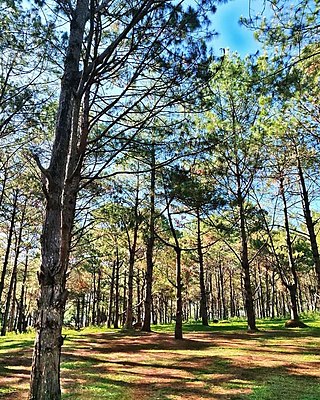
Don Salvador Benedicto, officially the Municipality of Don Salvador Benedicto or simply Salvador Benedicto and abbreviated as DSB, is a 4th class municipality in the province of Negros Occidental, Philippines. According to the 2020 census, it has a population of 26,922 people.

Silay, officially the City of Silay, is a 3rd class component city in the province of Negros Occidental, Philippines. According to the 2020 census, it has a population of 130,478 people.

Talisay, officially the City of Talisay, is a fourth class component city in the province of Negros Occidental, Philippines. According to the 2020 census, it has a population of 108,909 people.
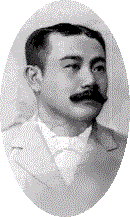
Aniceto Ledesma Lacson is a Filipino revolutionary general, sugar farmer, and businessman. He is also known as the first and only president of the Negros Republic from 1898 to 1901, and for leading the Negros Revolution alongside Juan Araneta.

The Republic of Negros was a short-lived revolutionary entity which had existed on the island of Negros first as a canton of the First Philippine Republic and later as a protectorate of the United States.

The Negros Revolution, commemorated and popularly known as the Fifth of November or Negros Day, was a political movement that in 1898 created a government on Negros Island in the Philippines, ending Spanish control of the island and paving the way for a republican government run by the Negrense natives. The newly established Negros Republic lasted for approximately three months. American forces landed on the island unopposed on February 2, 1899, ending the island's independence. Negros was then annexed to the Philippine Islands on 20 April 1901.
Central Negros Electric Cooperative, Inc., simply known as CENECO, was an electric cooperative in the Philippines. It was incorporated on February 24, 1975 and serves Bacolod City and nearby towns and cities in Negros Occidental.

Metro Bacolod is the 8th-most populous and the 6th-most densely populated metropolitan area out of the 12 metropolitan areas in the Philippines. This metropolitan area as defined by the National Economic and Development Authority (NEDA) has an estimated population of 840,170 inhabitants as of the 2020 official census by the Philippine Statistics Authority.

The 2011 POC-PSC National Games was held at the cities of Bacolod, Bago, Silay and Talisay - Negros Occidental from May 22–29, 2011.
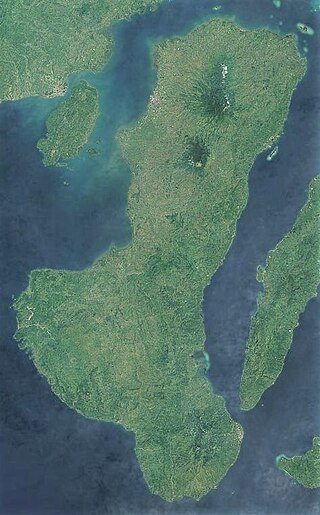
Negros is the fourth largest and third most populous island in the Philippines, with a total land area of 13,309 km2 (5,139 sq mi). The coastal zone of the southern part of Negros is identified as a site of highest marine biodiversity importance in the Coral Triangle.

The Northern Negros Natural Park is a protected area of the Philippines located in the northern mountainous forest region of the island of Negros in the Visayas. It is spread over five municipalities and six cities in the province of Negros Occidental and is the province's largest watershed and water source for seventeen municipalities and cities including the Bacolod metropolitan area. The park was established first as a forest reserve spanning 107,727 hectares on 28 April 1935 through Administrative Act No. 789 signed by Governor-General Frank Murphy. On 7 August 1946, the Northern Negros Forest Reserve was reduced to its present area of 80,454.5 hectares with the signing of Proclamation No. 798 by President Manuel Roxas. In 2005, the protected area was converted into a natural park under the National Integrated Protected Areas System (NIPAS) Act by virtue of Proclamation No. 895 signed by President Gloria Arroyo.
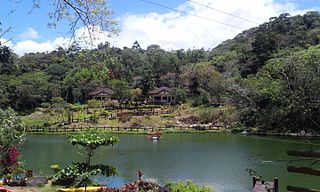
Mambukal Resort, officially the Township of Mambukal or simply known as Mambukal, is a resort township located within the boundaries of the municipality of Murcia, Negros Occidental. As a township, it is directly governed by the Provincial Government of Negros Occidental, which also manages Mambukal Mountain Resort in the 6-hectare townsite near Brgy. Minoyan. The resort is owned and managed by the Provincial Government of Negros Occidental under its Economic Enterprise Development Department.

Ayala North Point, is a real estate development project in Talisay, Negros Occidental created through a joint venture between Ayala Corporation and the Lacson estate. The project, which began in 1988 in collaboration with the heirs of General Aniceto Lacson, former president of the Republic of Negros, is an ongoing development. Modeled after the master-planned, mixed-use residential township concept first introduced with Ayala Alabang, the estate combines various residential and commercial elements.
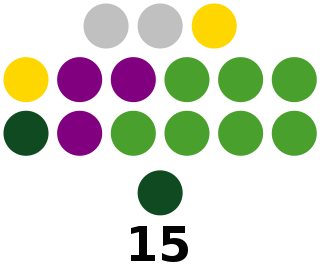
The Negros Occidental Provincial Board is the Sangguniang Panlalawigan of the Philippine province of Negros Occidental.
Alfredo Abelardo "Albee" Bantug Benitez is a Filipino politician and businessman serving as the mayor of Bacolod since 2022. He served three consecutive terms as the representative of Negros Occidental's 3rd district from 2010 to 2019, and was one of the richest congressmen in the Philippines.

National Route 6 (N6) is a 155-kilometer (96 mi) major primary national route that forms part of the Philippine highway network in the provinces of Negros Occidental and Negros Oriental.

The Negros Occidental Eco-Tourism Highway, officially known as the Bacolod–San Carlos Road and Bacolod–Murcia–Don Salvador Benedicto–San Carlos Road, is an 81.12-kilometer (50.41 mi) scenic highway that connects the city of Bacolod to the city of San Carlos in Negros Occidental, Philippines. It cuts through the north-central Negros Island and traverses the Northern Negros Natural Park, north of Mount Kanlaon. Its western segment in Bacolod also known as Alijis Road has a two-way bicycle lane.
References
- ↑ Mercurio, Richmond. "Razon's Primelectric aims to turn around Negros power service". Philstar.com. Retrieved 2024-10-23.
- ↑ "New central Negros power distributor seen to start operation by Q3". Philippine News Agency. Retrieved September 7, 2024.
- ↑ "House Bill No. 9805 - AN ACT GRANTING NEGROS ELECTRIC AND POWER CORP. A FRANCHISE TO ESTABLISH, OPERATE, AND MAINTAIN, FOR COMMERCIAL PURPOSES AND IN THE PUBLIC INTEREST, A DISTRIBUTION SYSTEM FOR THE CONVEYANCE OF ELECTRIC POWER TO THE END-USERS IN THE CITIES OF BACOLOD, SILAY, TALISAY, AND BAGO AND THE MUNICIPALITIES OF MURCIA AND DON SALVADOR BENEDICTO, ALL IN THE PROVINCE OF NEGROS OCCIDENTAL, AND ENSURING CONTINUOUS AND UNINTERRUPTED SUPPLY OF ELECTRICITY IN THE FRANCHISE AREA" (PDF). Senate of the Philippines. Retrieved September 7, 2024.
- ↑ "House Bill No. 9805 - NEGROS ELECTRIC AND POWER CORPORATION". Senate of the Philippines. Retrieved September 7, 2024.
- ↑ "Republic Act No. 12011" (PDF). Retrieved September 7, 2024.
- ↑ "Negros power firm gets franchise, seeks ERC nod to start operations". Philippine News Agency. Retrieved September 7, 2024.
- ↑ "2 newly commissioned transformers stabilize Bacolod power supply | Philippine News Agency". Philippine News Agency. Retrieved September 7, 2024.
- ↑ "CENECO Feeders - Central Negros Electric Cooperative, Inc". 9 December 2020. Retrieved September 7, 2024.